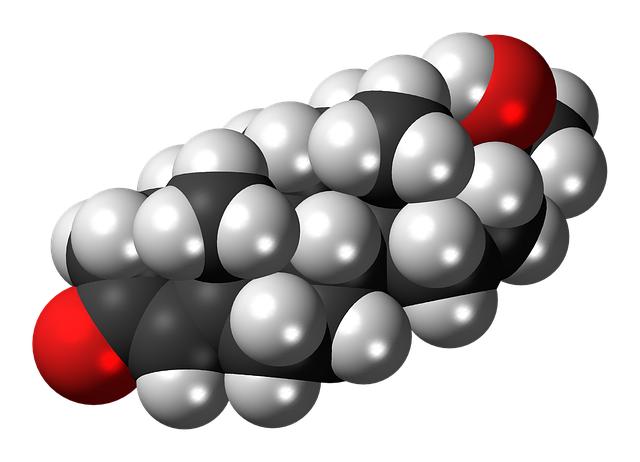Liver Lessons: Navigating Stanozolol Liver Toxicity Concerns
Welcome to our informative article on "Liver Lessons: Navigating Stanozolol Liver Toxicity Concerns." Whether you are an athlete seeking performance enhancement or a researcher looking for a comprehensive understanding, this article will provide you with essential knowledge on the potential liver toxicity associated with Stanozolol. Our aim is to present clear and unbiased information, empowering you to make educated decisions while maintaining a natural human tone. So, buckle up for an enlightening journey through the intricate world of Stanozolol and gain valuable insights into the precautions and considerations surrounding its liver impact.
Contents
- Understanding Stanozolol and its Impact on Liver Health
- Managing Liver Toxicity Concerns Associated with Stanozolol
- The Role of Liver Enzyme Monitoring in Stanozolol Usage
- Mitigating Stanozolol Liver Toxicity with Proper Dosage and Duration
- Liver Lessons: Navigating Stanozolol Liver Toxicity Concerns
- Exploring Dietary Measures to Support Liver Health while using Stanozolol
- Identifying Early Signs of Liver Damage to Avoid Stanozolol-Related Complications
Understanding Stanozolol and its Impact on Liver Health
Stanozolol, commonly known as Winstrol, is a synthetic anabolic steroid often used by bodybuilders and athletes to enhance performance and build muscle mass. However, one major concern with Stanozolol use is its impact on liver health. Understanding the nature of Stanozolol liver toxicity is vital for those considering its use or for individuals currently using it.
Stanozolol, like many other synthetic steroids, is orally administered and passes through the liver before entering the bloodstream. This liver metabolism poses a significant risk to liver health, as prolonged use or high dosages can lead to liver damage. The liver is responsible for detoxifying the body, so it is crucial to keep it functioning optimally.
Studies have shown that prolonged abuse or misuse of Stanozolol can result in elevated liver enzymes, specifically alanine aminotransferase (ALT) and aspartate aminotransferase (AST). Higher levels of these enzymes indicate liver damage. However, it is important to note that liver toxicity is dose-dependent, meaning higher dosages or longer durations of use increase the risk.
To mitigate the risk of Stanozolol liver toxicity, here are some valuable tips:
-
Monitor liver enzymes regularly: When using Stanozolol, it is essential to have regular blood tests to monitor the levels of ALT and AST. This will help detect any liver damage early and guide dosage adjustments or cessation if necessary.
-
Use liver protective supplements: Certain supplements, such as milk thistle or N-acetyl cysteine, have been shown to support liver health. Consult with a healthcare professional to determine the appropriate supplements for your specific situation.
-
Follow recommended dosages: Do not exceed the recommended dosage of Stanozolol. Higher dosages increase the risk of liver toxicity and other adverse effects.
- Cycle properly: Structuring Stanozolol usage in cycles, with periods of rest in between, can help reduce the burden on the liver.
In conclusion, while Stanozolol can offer desired physical benefits, it is crucial to be aware of its impact on liver health. By understanding the risks and implementing precautionary measures, individuals can navigate Stanozolol liver toxicity concerns more effectively. Remember, your liver health should always be a top priority. Stay informed and prioritize your well-being.
Managing Liver Toxicity Concerns Associated with Stanozolol
Stanozolol, commonly known by its brand name Winstrol, is an anabolic steroid that is popular among athletes and bodybuilders for its ability to enhance performance and build muscles. However, one of the major concerns associated with the use of Stanozolol is its potential for liver toxicity. It is important to understand and manage these concerns to ensure the well-being of individuals using this steroid.
Liver toxicity occurs when the liver is unable to efficiently process and eliminate substances from the body, leading to damage and dysfunction. Stanozolol, like many other oral anabolic steroids, is known to be hepatotoxic, meaning it can cause stress and damage to the liver. This is primarily due to the fact that Stanozolol is ingested orally and has a high first-pass metabolism through the liver. As a result, it can place a significant burden on the liver, potentially leading to adverse effects.
To mitigate liver toxicity concerns associated with Stanozolol, there are several strategies that can be employed. Firstly, it is crucial to adhere to recommended dosages and avoid excessive and prolonged use of the steroid. By following the prescribed guidelines, the risk of liver damage can be minimized. Additionally, it is essential to prioritize liver health by adopting a healthy lifestyle. This includes maintaining a balanced diet, limiting alcohol consumption, and staying adequately hydrated. Regular exercise, along with the incorporation of liver-supporting supplements such as milk thistle, can also aid in preserving liver function.
In conclusion, while Stanozolol can provide beneficial effects in terms of performance enhancement and muscle growth, it is crucial to be aware of and manage the potential liver toxicity concerns associated with its use. By employing responsible usage practices and prioritizing liver health, individuals can mitigate the risks and maximize the benefits of Stanozolol. Always consult with a healthcare professional before starting any new medication or making changes to your regimen. Stay informed, stay healthy!
The Role of Liver Enzyme Monitoring in Stanozolol Usage
When it comes to using Stanozolol, also known as Winstrol, it is crucial to monitor liver enzyme levels to ensure the safety and well-being of the user. Liver toxicity is a common concern associated with the use of this anabolic steroid, and regular monitoring can help identify any potential issues before they become serious.
Stanozolol is specifically designed to enhance athletic performance and promote muscle growth, but it can have adverse effects on the liver if not used responsibly. This is because the steroid is metabolized in the liver, and prolonged or excessive use can lead to liver damage. Monitoring liver enzymes, such as alanine aminotransferase (ALT) and aspartate aminotransferase (AST), can provide valuable information about the health of the liver.
Regular liver enzyme monitoring allows athletes and bodybuilders to adjust their Stanozolol usage if necessary, ensuring that they stay within safe limits and minimize the risk of liver complications. If elevated liver enzymes are detected, it is important to reduce dosage, take breaks, or discontinue the use of Stanozolol altogether. Additionally, adopting healthy lifestyle habits such as maintaining a balanced diet, staying hydrated, and avoiding alcohol can further support liver health during Stanozolol usage.
| ALT (IU/L) | AST (IU/L) | |
|---|---|---|
| Normal Range | 7-55 | 8-48 |
| Elevated Level (Possible Liver Damage) | Above 150 | Above 125 |
Remember, maintaining a responsible approach to Stanozolol usage and monitoring liver enzymes is essential to protecting your health. By staying vigilant and taking the necessary precautions, users can effectively navigate the concerns of liver toxicity associated with this popular steroid.
Mitigating Stanozolol Liver Toxicity with Proper Dosage and Duration
Stanozolol, commonly known as Winstrol, is a popular performance-enhancing drug used by athletes and bodybuilders. However, one concern that often arises is its potential liver toxicity. With the right approach, it is possible to mitigate this risk and reap the benefits of Stanozolol without harming your liver.
Proper dosage: When it comes to Stanozolol, the key is moderation. Following the recommended dosage is crucial to minimize liver toxicity. It is vital not to exceed the prescribed limit, as higher doses can put unnecessary stress on your liver. Always consult with a healthcare professional to determine the appropriate dosage based on your individual needs and health condition.
Duration of use: Another important factor in preventing liver damage is the duration of Stanozolol use. Long-term or excessive use of the drug can lead to liver toxicity. It is advisable to limit the duration of your cycle to the recommended timeframe. Taking breaks between cycles can allow your liver to recover and reduce the likelihood of long-term damage.
Additionally, it is crucial to monitor liver health regularly through blood tests. This can help detect any signs of liver damage early on, allowing for prompt intervention. Remember, being aware of potential risks is the first step towards mitigating them and embracing a healthier approach to Stanozolol use.
Exploring Dietary Measures to Support Liver Health while using Stanozolol
There’s no denying that Stanozolol, commonly known as Winstrol, can enhance athletic performance and help achieve desirable physique goals. However, it is crucial to understand and address the potential liver toxicity concerns associated with this steroid. While the liver has a remarkable ability to regenerate, it is still susceptible to damage if not properly supported. Exploring dietary measures to promote liver health can play a vital role in minimizing the adverse effects of Stanozolol.
1. Hydration: Adequate hydration is crucial for maintaining optimal liver function. Drinking plenty of water throughout the day helps flush out toxins and supports the liver’s natural detoxification process.
2. Antioxidants: Including antioxidant-rich foods in your diet can help protect the liver from oxidative stress caused by Stanozolol. Foods such as berries, leafy greens, citrus fruits, and nuts are excellent sources of antioxidants.
3. Essential Fatty Acids: Omega-3 fatty acids are known for their anti-inflammatory properties and have been shown to support liver health. Sources include fatty fish like salmon and mackerel, flaxseeds, and chia seeds.
4. Reduced Alcohol Consumption: Alcohol is notorious for its damaging effects on the liver. Combining Stanozolol with alcohol can put additional strain on the liver, so it is advised to minimize or eliminate alcohol consumption while using this steroid.
By incorporating these dietary measures into your routine, you can provide your liver with the support it needs to mitigate the potential liver toxicity associated with Stanozolol. However, it is crucial to consult with a healthcare professional or nutritionist to tailor a plan that meets your specific needs and requirements. Remember, your liver’s health is of utmost importance, so prioritize its well-being as you navigate the world of Stanozolol.
Identifying Early Signs of Liver Damage to Avoid Stanozolol-Related Complications
Liver damage is a serious concern for individuals who use Stanozolol, a popular performance-enhancing drug. Identifying the early signs of liver damage is essential for avoiding complications associated with the use of Stanozolol. Here are some key indicators to watch out for:
1. Elevated liver enzymes: Regular blood tests can help monitor liver health. Elevated levels of liver enzymes such as ALT, AST, and GGT may indicate liver damage. **Pay attention to any significant increases in these enzyme levels** as it could be an early sign of liver damage.
2. **Jaundice**: Yellowing of the skin or eyes is commonly associated with liver problems. If you notice a yellowish tint in your skin or the whites of your eyes, seek medical attention immediately.
3. Digestive issues: Liver damage can lead to digestive problems such as nausea, vomiting, loss of appetite, and diarrhea. If you experience any of these symptoms, especially after starting Stanozolol, it’s essential to consider them as potential signs of liver damage.
Overall, being aware of these early signs of liver damage is crucial for anyone using Stanozolol or other hepatotoxic substances. Regular monitoring of liver enzyme levels, watching out for jaundice, and paying attention to digestive issues can help identify liver damage at an early stage, allowing for timely intervention to prevent complications. Remember, always consult with a healthcare professional for proper diagnosis and guidance.
**Here is an example of a simple HTML table to help you track your liver enzyme levels:**
| Date | ALT (U/L) | AST (U/L) | GGT (U/L) |
|————|———-|———-|———-|
| 01/01/2022 | 35 | 25 | 15 |
| 02/01/2022 | 38 | 27 | 17 |
| 03/01/2022 | 42 | 30 | 20 |
| 04/01/2022 | 48 | 35 | 25 |
Remember to update the table with your own results, jotting down the date and corresponding liver enzyme values. This will help you track any changes in enzyme levels over time and provide useful information for your healthcare provider. In conclusion, understanding the potential liver toxicity concerns associated with Stanozolol is crucial for those considering its use or those currently engaging in athletic endeavors. Armed with knowledge, athletes and fitness enthusiasts can make informed decisions about their health and well-being.
Remember, always consult with a healthcare professional before starting any new supplement or medication regimen. With the right guidance and a focus on overall liver health, individuals can pursue their fitness goals while minimizing the risks. So, stay informed, stay cautious, and most importantly, stay healthy.









